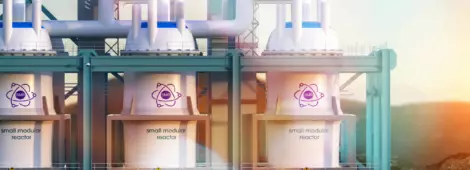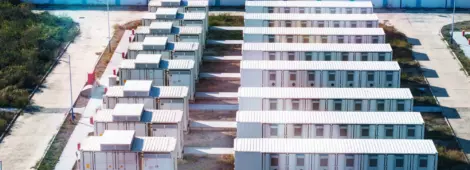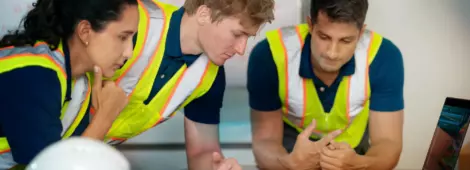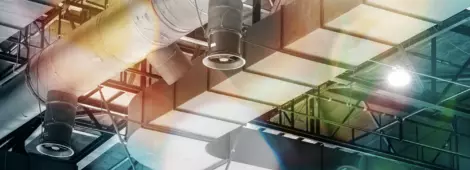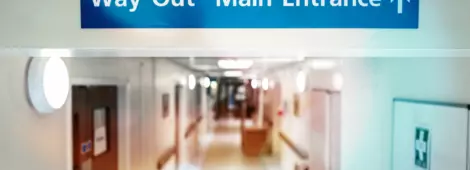
UL 9540A vs. C800: How LSFT is Reshaping BESS Design + Compliance
by Jihan El Ouaragli (JH), Jens Conzen (JH) + Michael Becker (CSA)
As Battery Energy Storage Systems (BESS) continue to scale across urban, commercial and utility applications, the conversation around fire safety is evolving fast, and regulators are responding. With the upcoming 2026 Edition of NFPA 855, Standard for the Installation of Energy Storage Systems, the updated 5th Edition of UL 9540A, the Standard for Test Method for Evaluating Thermal Runaway Fire Propagation in Battery Energy Storage Systems, and the release of CSA/ANSI C800:25, Testing Protocol for Energy Storage System Reliability and Quality Assurance Program, the industry is entering a new phase of fire testing expectations.
At the center of this shift is Large-Scale Fire Testing (LSFT), a term that’s no longer just a best practice but is increasingly becoming a regulatory requirement. This blog explores what’s changing, how UL 9540A and CSA/ANSI C800 differ in approach and why LSFT is emerging as a critical component of any BESS risk strategy.
This post is part of our continuing series on battery safety. Check out our previous blogs on CE marking vs. UL 9540 and what NYC proposed BESS rules could mean for your project.
A Shift Toward Realistic Fire Scenarios
Recent incidents at operational grid-scale BESS installations have highlighted the limitations of conventional fire testing methods. In response, several jurisdictions, including California, New York State and New York City, are adopting or proposing rules that require LSFT for BESS projects exceeding defined thresholds (e.g., 600 kWh for lithium-ion systems). In some cases, even smaller residential systems may trigger LSFT requirements when other conditions are met, such as insufficient spacing. For example, the San Jose Fire Department has issued guidance requiring LSFT for residential BESS installations with less than 3 feet of spacing between units, in accordance with the 2022 California Fire Code (CFC). The department further clarified that typical UL 9540A thermal runaway tests may not meet the intent of the LSFT requirement unless the test involves fire inducement and demonstrates that a fire in one unit does not propagate to adjacent units.
These policy shifts reflect a broader industry realization: single-unit (or rack) testing where no intentional fire condition is achieved is no longer sufficient. As BESS become larger and more interconnected, the risks of thermal runaway propagation and cascading failure demand validation through more realistic fire scenarios. Previous thermal runaway tests often targeted a specific failure scenario with the purpose of evaluating the propensity for thermal runaway propagation. While this type of testing is valuable, it does not necessarily capture the worst credible fire scenario, especially if the test ends without a sustained fire event or fails to demonstrate full system involvement. Recent incidents have shown that large-scale fire events could be caused by other external factors other than thermal runaway propagation where ignition of gases is achieved. This type of condition could be caused by moisture ingress, auxiliary equipment failure, short circuiting, etc. These conditions were not properly captured in specific thermal runaway propagation testing normally performed in existing standards.
NFPA 855:2026 formalizes this shift with the introduction of Annex G.11, which for the first time:
- Separates LSFT from UL 9540A installation-level testing
- Requires testing of multiple interconnected racks in realistic configurations
- Focuses on fire growth, adjacent unit impact and system-wide containment
- Moves LSFT from “optional” to expected, particularly for large and clustered BESS installations
In parallel, UL is preparing a dedicated LSFT appendix to align its methodology with the intent of G.11, closing gaps between lab-based testing and real-world performance.
What is CSA C800 + What Does it Cover?
CSA/ANSI C800:25, a newly published North American standard in 2025, titled “Testing Protocol for Energy Storage System Reliability and Quality Assurance Program,” is the first of its kind to standardize how BESS are tested for reliability and abnormal environmental stress over their operational lifecycle.
It is intended to help manufacturers, integrators and project developers demonstrate system robustness under harsh conditions and includes a LSFT procedure in Section 9.7.
CSA/ANSI C800:25 is organized into 10 core sections, supported by informative and normative annexes. Here's a brief overview of the key content areas:
- Section 5: Test Protocols and Methodology, which defines procedures for measurement, monitoring and testing conditions for reliability.
- Sections 6–8: Environmental and Seismic Testing, which includes tests for BESS performance under thermal (heat/cold), moisture, UV, altitude and seismic and vibration conditions.
- Section 9: Abuse Tests, which include critical tests like internal condensation, immersion, shock, impact and ballistic testing.
- Section 9.7: Large-Scale Fire Test Procedure (LSFT), which is a test for evaluating the system’s behavior under fully involved fire scenarios, including ignition source, heat release, damage spread and deflagration.
- Section 10: Operational Reliability and Quality Assurance Program, which provides guidelines for routine inspections, monitoring plans, safe operation, power system durability and failure recovery procedures.
- Annexes A–D include support documentation, including component standards, reliability concepts and report formats.
UL 9540A vs. CSA/ANSI C800: Different Tools for Different Goals
UL 9540A is the industry’s most widely recognized test method for evaluating thermal runaway fire propagation in BESS. The fourth edition of UL 9540A (2019) is referenced and required in both NFPA 855 and the International Fire Code (IFC) as a test standard to satisfy the full-scale fire testing requirement for BESS. It is also used by engineers to evaluate and the AHJs to approve separation distances and fire protection mitigations for BESS projects.
It involves a tiered approach:
- Cell-level abuse testing
- Module-level propagation testing
- Unit-level, full-scale fire testing
- Installation level, as needed
UL 9540A focuses on how thermal runaway begins, how it propagates across the system and what built-in protections help contain the event. It’s used by engineers to model risk and by AHJs to validate safety during plan review and permitting.
CSA/ANSI C800 was introduced to address a key gap: what happens when a fully involved fire breaks out in a BESS? While UL 9540A often stops short of a full fire (especially if the test fails to induce thermal runaway propagation), CSA/ANSI C800 requires that the BESS under test becomes fully involved in sustained fire condition. It emphasizes the worst-case fire scenario and evaluates the following:
- Flame spread to adjacent BESS units
- Smoke and heat release profiles
- Activation of built-in passive safety systems
- Impact on nearby structures or critical infrastructure
The test allows for various initiation methods, including flame, spark, puncture or overcharge, as long as the fire is sustained.
Key Differences at a Glance
Feature |
UL 9540A |
LSFT (CSA/ANSI C800) |
| Purpose | Evaluate thermal runaway propagation | Evaluate consequences of a fully involved BESS fire |
| Focus | Propagation (cell → module → unit → installation) | Full involvement, adjacent unit exposure |
| Fire ignition | Film heater to induce cell-level failure | Any sustained ignition (flame, puncture, spark) |
| Test outcome | May not result in flaming/visible fire | Requires fully developed fire condition |
| Regulatory use | Required by current NFPA 855/IFC/CFC | Not yet required; used as guidance to meet LSFT required by AHJ |
| Suitable for | Obtaining data, designing unit spacing, suppression, containment | Assessing external impact and worst-case risk, designing installation spacing on site |
Are Both UL 9540A + LSFT Needed?
The short answer is, “yes.”
UL 9540A remains the baseline for U.S. permitting and compliance. However, as fire marshals and regulators request more realistic fire data on worst-case scenarios, particularly for containerized systems, custom LSFTs, such as those conducted under CSA/ANSI C800, will soon be required. In fact, CSA/ANSI C800 references both the CFC and the IFC Commentary, which emphasize the need for unit-to-unit fire exposure testing.
If your BESS failed to produce fire under UL 9540A testing conditions, or if your system will be installed in a jurisdiction that now requires LSFT-type evidence, it may be time to consider both tests as part of your fire risk and compliance strategy.
And looking ahead, the next edition of NFPA 855 (2026) is expected to introduce formal requirements for intentional ignition and full-scale fire testing. That means standards such as CSA/ANSI C800 may soon become part of the code, not just a best practice or AHJ-driven requirement.
This dual-testing approach is particularly important for manufacturers exporting to the U.S., where permitting decisions are increasingly based on performance under worst-case fire conditions, not just propagation data. As NFPA 855:2026 and related AHJ expectations evolve, credible full-scale testing is becoming a market access requirement, not just a design validation tool.
Whether through UL 9540A, CSA/ANSI C800 or upcoming LSFT protocols, credible full-scale testing data is quickly becoming the key to helping:
- Developers to reduce system spacing and permit delays
- Original equipment manufacturer (OEMs) to validate design claims with worst-case performance data
- AHJs and insurers to gain confidence from standardized, scenario-based testing
- End users benefit from safer installations and lower risk exposure
Need BESS Safety Support?
As testing standards evolve, we support OEMs, developers and AHJs with:
- UL 9540A and LSFT planning, review and coordination with accredited testing labs
- Pre-compliance strategies for NFPA 855:2026
- Hazard Mitigation Analyses (HMAs) aligned with NFPA 855:2026
- AHJ coordination and technical interpretation of testing data
Need help aligning your design or product with the future of fire safety testing? Let’s talk. Our battery energy storage safety experts can help you build safer, scalable energy storage systems, everywhere.

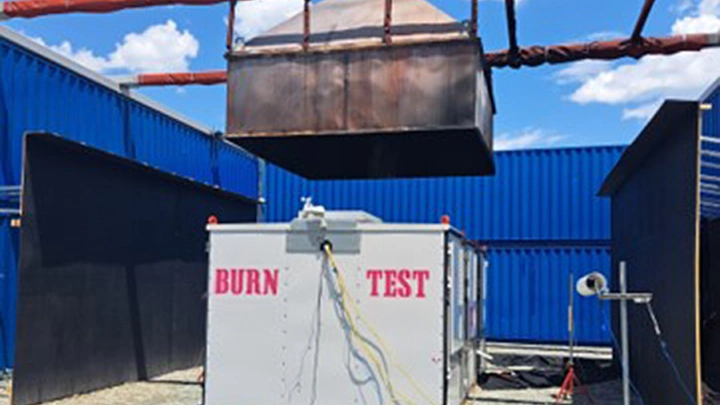
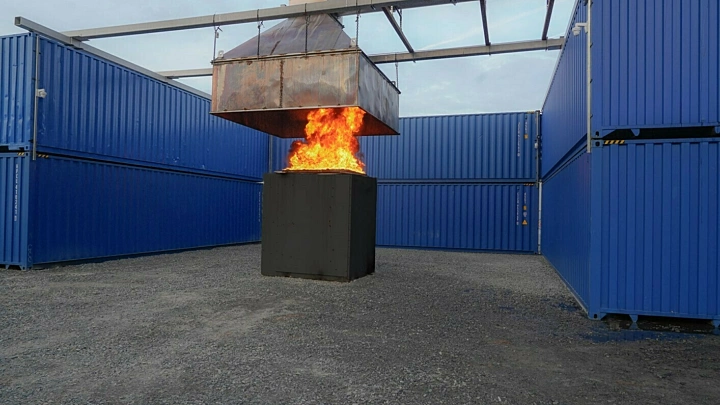

Subscribe to Our Lithium-Ion Insights Series

Jens is a Vice President of business development in the Midwest, and a Subject Matter Expert in Industrial and Process Safety. He has hands-on experience in various disciplines, such as engineering design, international and national…

Dr. Jihan El Ouaragli is a staff engineer at Jensen Hughes, specializing in battery fire protection, including battery energy storage systems (BESS), battery storage and testing, micromobility, and electric vehicles (EVs). With a Ph.D. in…




